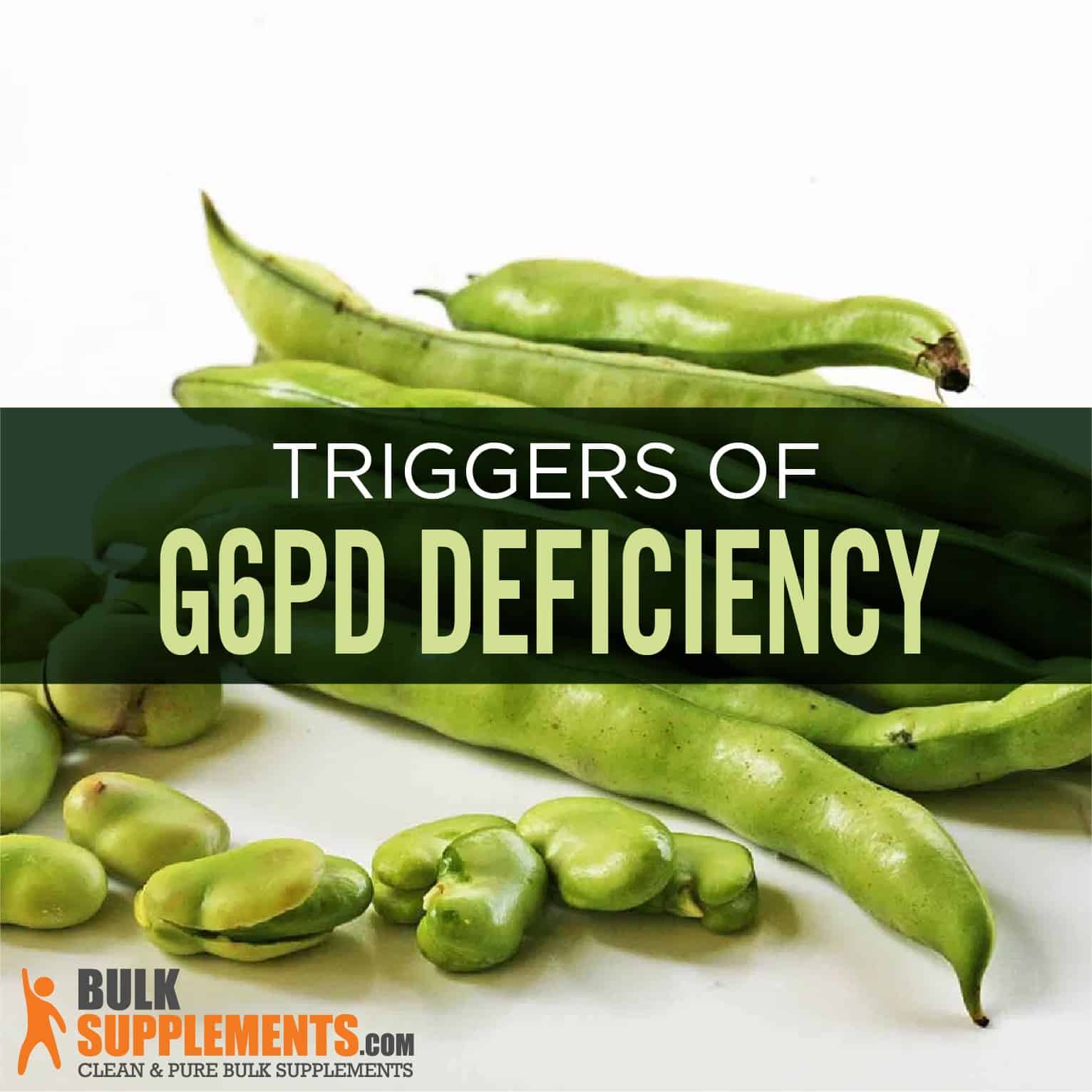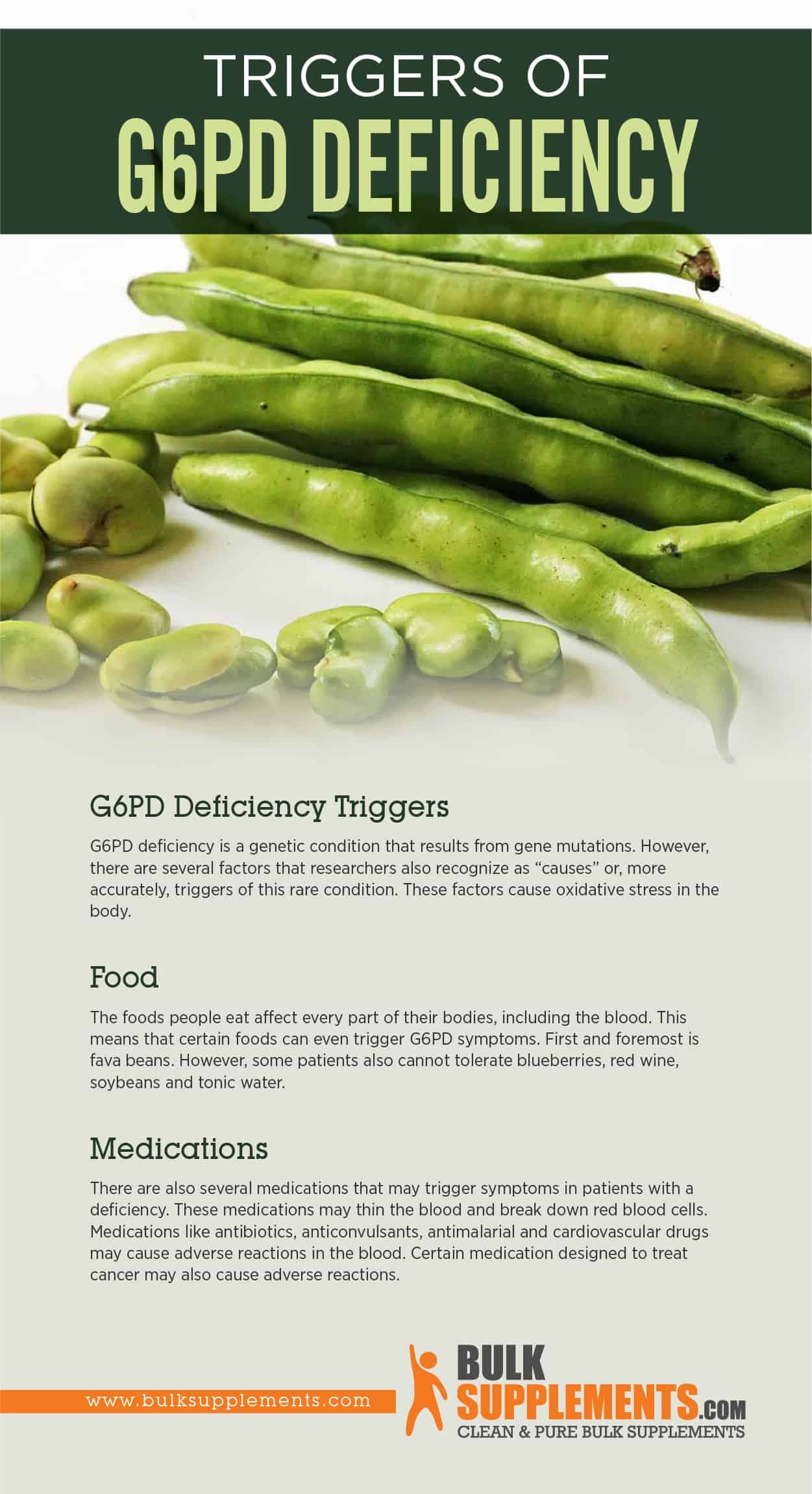G6PD (Glucose-6-Phosphate Dehydrogenase) Deficiency: Causes, Symptoms & Treatment
by James Denlinger Digital Marketing Strategist
What is G6PD Deficiency?
Glucose-6-phosphate dehydrogenase (G6PD) deficiency is definitely a mouthful. It is a rare, hereditary health condition that causes red blood cells to break down faster than they should when the body is exposed to certain foods, drugs or infections. This condition is called hemolysis and it is a direct result of low levels of the G6PD enzyme or if the patient is missing the enzyme altogether.
G6PD is an inherited X-linked recessive condition caused by gene mutations. This makes it more likely for males to develop it because they only have one X chromosome. Females are generally carriers, but it often does not produce symptoms because they have two X chromosomes. So if a female patient has the mutation on one X chromosome, they still have another chromosome without a mutation.
G6PD is rare, but it is no mystery. Doctors are well-practiced in treatment and typically individuals fare very well after treatment. They key is for patients to know as much as possible about the condition to avoid factors that may trigger the symptoms.
Signs of G6PD Deficiency
In most cases, patients with the deficiency never show any symptoms. However, when the patient is exposed to a trigger, it can cause a set of symptoms that signal an abnormality in the blood or G6PD deficiency including:
- Rapid heart rate
- Jaundice
- Dark or cloudy urine
- Fever
- Pale skin
- Shortness of breath
- Dizziness
- Fatigue
Associated Conditions
Neonatal Jaundice
Neonatal jaundice is not uncommon in infants. Jaundice causes slight discoloration, a yellowish pigmentation in the skin and the whites of the eyes. However, this condition is even more prevalent in infants with G6PD deficiency. This is because the baby’s blood contains excess bilirubin, a yellow pigment that the liver produces. Red blood cells break down bilirubin, so if the red blood cells break down abnormally, it can cause jaundice.
Hemolytic Crisis
A hemolytic crisis is a paramount symptom for G6PD. It occurs when medicine, food or infections trigger a quick loss of red blood cells over a short period of time. Typically these symptoms subside once the patient removes the trigger, but in some cases it can result in chronic anemia. Hemolytic crises are more common in children and triggers include certain illnesses or painkillers. Mothballs can also cause extremely harmful if a child ingests one.
Diabetic Ketoacidosis
Diabetic ketoacidosis is when the body produces excess acids in the blood called ketones. It a common complication associated with diabetes, which is why some patients may overlook it when it comes to G6PD deficiency. Both conditions can also have some of the same triggers.
G6PD Deficiency Triggers
G6PD deficiency is a genetic condition that results from gene mutations. However, there are several factors that researchers also recognize as “causes” or, more accurately, triggers of this rare condition. These factors cause oxidative stress in the body.
Food
The foods people eat affect every part of their bodies, including the blood. This means that certain foods can even trigger G6PD symptoms. First and foremost is fava beans. However, some patients also cannot tolerate blueberries, red wine, soybeans and tonic water.
Medications
There are also several medications that may trigger symptoms in patients with a deficiency. These medications may thin the blood and break down red blood cells. Medications like antibiotics, anticonvulsants, antimalarial and cardiovascular drugs may cause adverse reactions in the blood. Certain medication designed to treat cancer may also cause adverse reactions.
Viral & Bacterial Infections
Bacterial and viral infections may also trigger G6PD symptoms. If a patient has an infection, it causes oxidative stress that the body cannot tolerate as well. For example, bacterial infections that may trigger symptoms include strep throat, tuberculosis and urinary tract infections. Viral infections include chickenpox, AIDS and the common cold and flu.

G6PD Deficiency Treatment
Blood Transfusion
G6PD is manageable and patients can live with the condition, but in some rare cases it may require treatment to reverse abnormalities in the blood. For example, in severe cases patients may need a blood transfusion. This is a common practice and typically it is very safe. In the process, the physician transfers blood from a donor to the recipient’s bloodstream.
Dialysis
Dialysis is a treatment that helps support kidney function if they cannot perform correctly on their own. The kidneys help remove waste, salt and extra water from the body. They can also help the body maintain a safe level of certain chemicals in the blood that it needs, such as potassium and sodium. Lastly, dialysis may help control high blood pressure, which medical researchers associate with kidney failure. In fact, acute renal failure is common in patients with G6PD deficiency and patients may need to undergo dialysis to manage it.
Avoid Stressors
Although there are treatment options, the best way for patients with G6PD deficiency to avoid symptoms is to avoid triggers. The three main triggers are medication, food and infections. Patients should take extra precaution to avoid any factors that can cause oxidative stress.
Supplements for G6PD Deficiency
Folic Acid
Folic acid is a vitamin that may be helpful for pregnant women and babies. However, doctors also prescribe it frequently to individuals with G6PD deficiency. Specifically, folic acid can help the bone marrow keep up with production demands to make red blood cells, potentially reversing the effects of G6PD deficiency. As a dietary supplement, the recommended dosage for folic acid (Vitamin B9) powder is no more than 500 mg a day.
Vitamin E
Vitamin E is naturally present in the blood and cell membranes and helps prevent lipid peroxidation. During oxidative stress, such as with G6PD lipid peroxidation, it may interfere with cellular homeostasis. Vitamin E can help stabilize and prevent these processes. The suggested dosage for vitamin E powder is 500 to 1,000 mg per day.
Ferrous Fumarate
Ferrous fumarate is an iron supplement and it may help patients with iron deficiency anemia, a very common nutrient deficiency. Anemia is also related to G6PD deficiency and researchers have also tested iron supplements as a potential treatment. The suggested serving size for ferrous fumarate powder as a dietary supplement is 55 mg once a day. Use a milligram scale for accuracy.
The Bottom Line
Glucose-6-phosphate dehydrogenase deficiency is a mouthful, but it is also extremely rare. It results when the body breaks down red blood cells too quickly. Usually, it only causes symptoms when the patient is exposed to triggers such as medications, certain foods or infections. Signs and symptoms include jaundice, pale skin, fatigue and dizziness.
Luckily, the symptoms usually disappear after the patient eliminates the trigger and the best way to prevent it is to avoid them altogether. However, in some serious cases the patient may require a blood transfusion or dialysis as treatment. Patients may also try natural supplements for the condition. However, they are not a complete treatment for G6PD deficiency or any other medical condition on their own. Consult a doctor before adding supplements to a dietary regimen.
Sponsor Ads
Created on Mar 1st 2020 18:35. Viewed 175 times.



